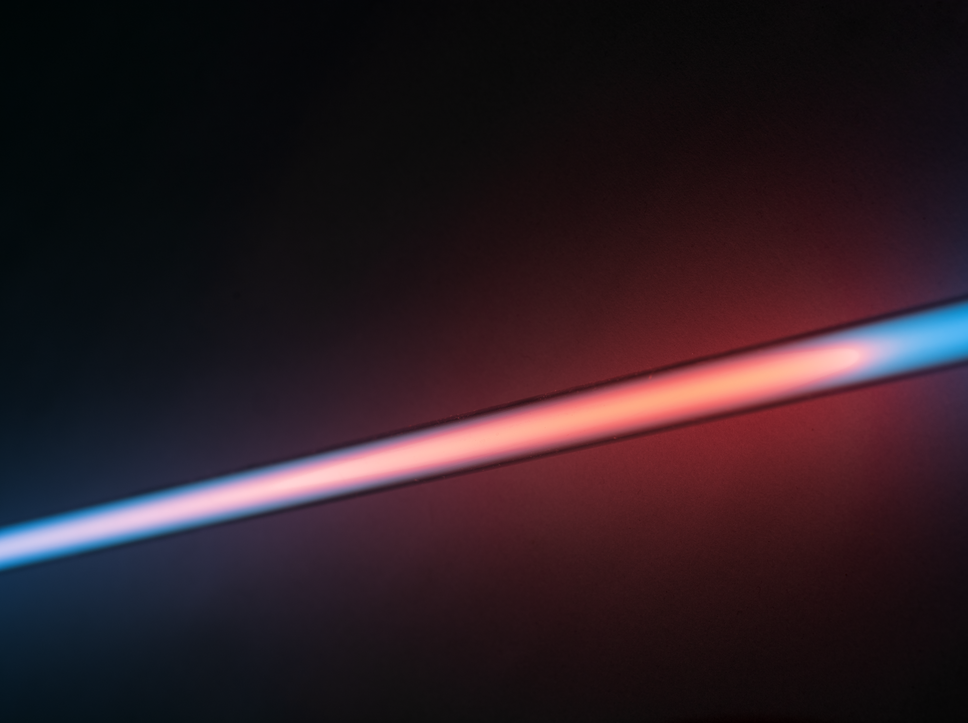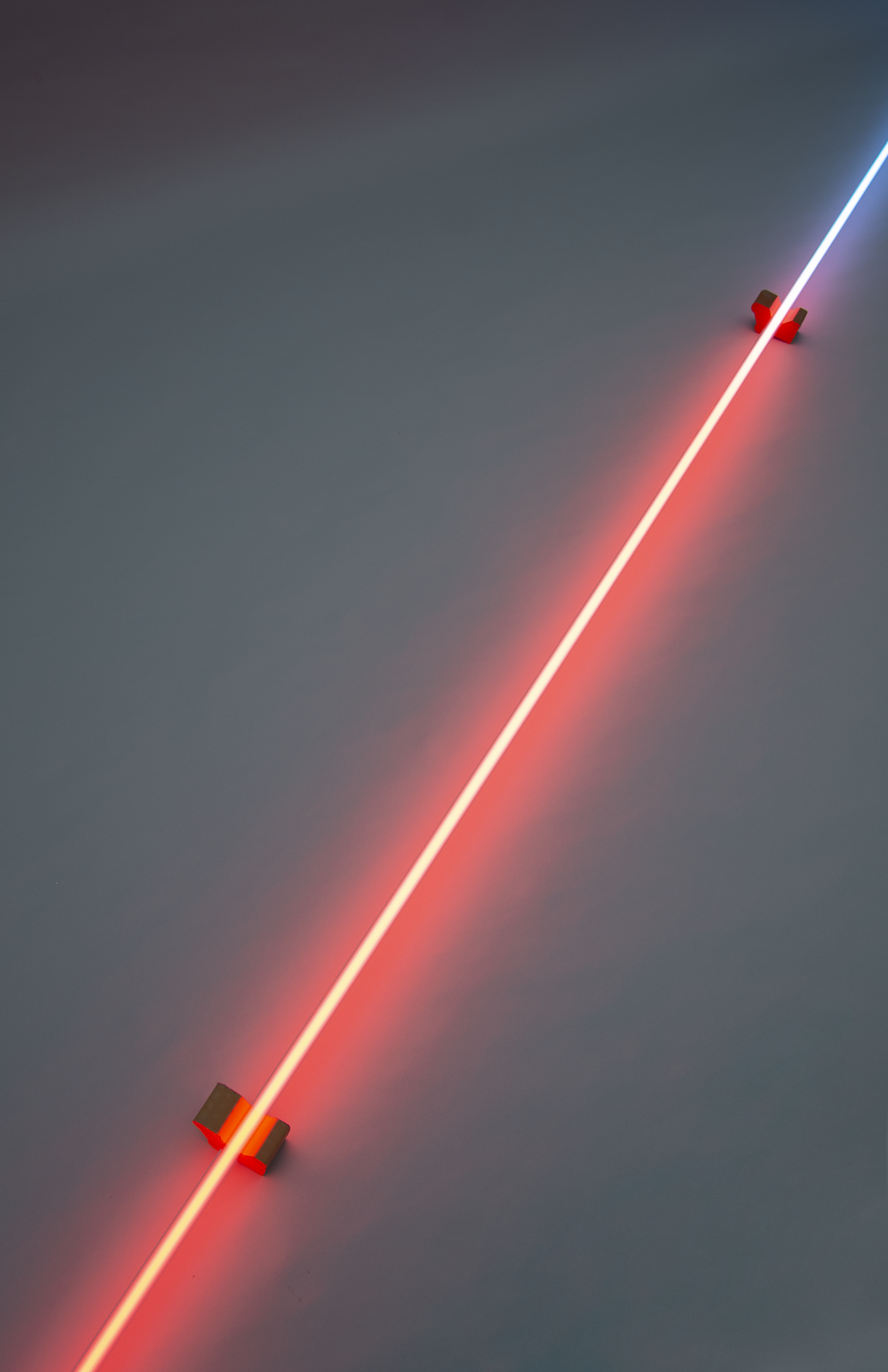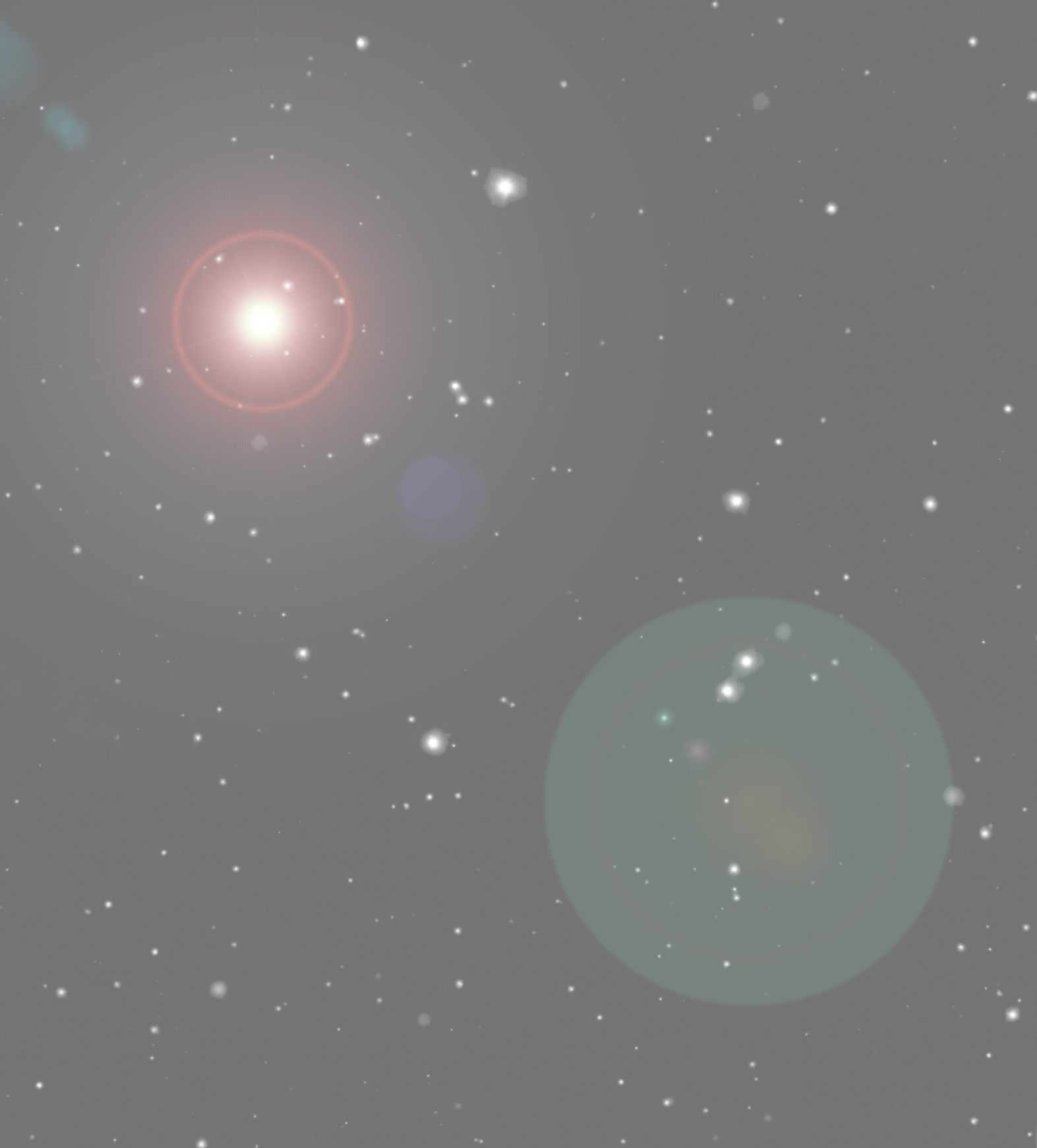4. Images made by Cosmic Rays
In the context of the Art@CMS initiative, organized by the nuclear research centre CERN in Geneva (Switzerland), I was asked in 2017 to participate in a long-term project, that eventually led to the group exhibition Harbinger II: Subtle Collisions, held at Ghent University’s Botanical Garden in July 2019. I realized three works for the project, two of which are relevant to this exposition, namely Asymptotic Freedom and Hotspot.
4.1. Asymptotic Freedom
Asymptotic Freedom (2019) consists of a 3-metre-long glass tube filled with pure neon and a small amount of mercury. When switching on the direct high voltage current, the negatively charged mercury vapours are attracted by the positive electrode and start to drift in its direction at the other end of the tube. The migration results in a gradual yet unpredictable shift between the colours blue and red, seeing that the luminous glow of neon is red and that of mercury vapour is blue. The more the mercury fumes travel across the tube, the more the light shifts from red to blue. Once the vapours have migrated entirely towards the positively charged end of the tube, the polarity of the electrodes is reversed via an electronic circuit, causing the mercury to travel in the other direction, towards its initial starting point. The blue glow is slowly overtaken by red once again. This process is looped and repeated ad infinitum.
The title Asymptotic Freedom refers to a term used in particle physics when addressing the principles of interaction. Strong interaction concerns the mechanism responsible for the strong nuclear force, also called the colour force. It holds quarks and gluons together to form protons, neutrons, baryons and mesons. Since quarks make up the baryons, and the strong interaction takes place between baryons, you could say that the colour force acts as a source of the strong interaction, or that the strong interaction is like a residual colour force, which extends beyond the proton or neutron to bind them together in a nucleus. Inside a baryon, however, the colour force has some extraordinary properties not seen in the strong interaction between nucleons. One of those is the fact that the colour force appears to exert little influence at short distances so that the quarks are like free particles within the confining boundary of the colour force and only experience the strong force when they begin to get too far apart. The term asymptotic freedom is invoked to describe this interactive behaviour between quarks. The title of this work also hints at the uncertainty principle, articulated by the German physicist Werner Heisenberg in 1927. The principle states that any attempt to measure precisely the velocity of a subatomic particle, such as an electron, will knock it about in an unpredictable way, so that a simultaneous measurement of its position has no validity. This result has nothing to do with inadequacies in the measuring instruments, the technique, or the observer; it arises out of the intimate connection in nature between particles and waves in the realm of subatomic dimensions. Heisenberg's uncertainty principle first and foremost points at the limits to our knowledge of the behaviour of physical objects on a quantum level.




